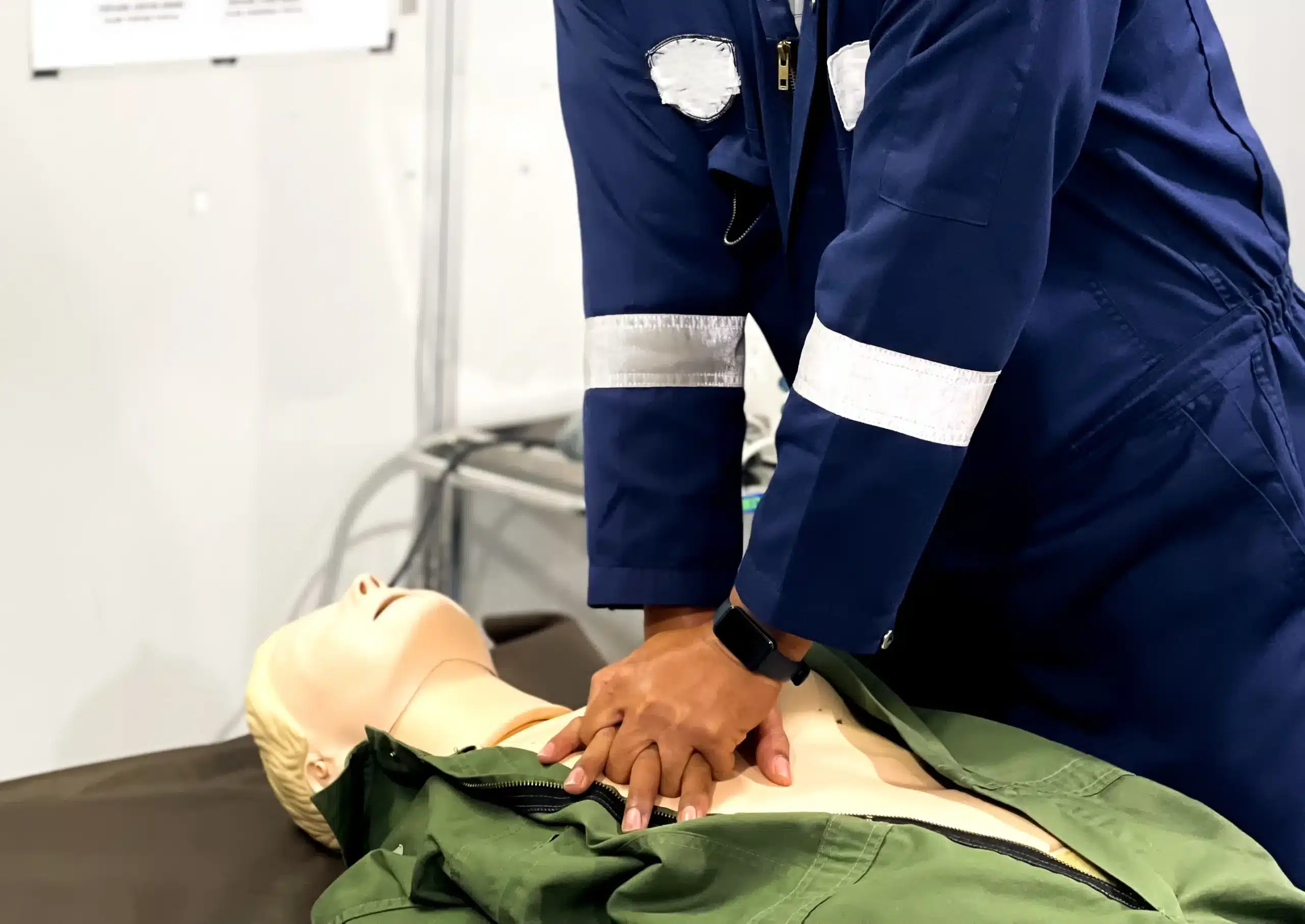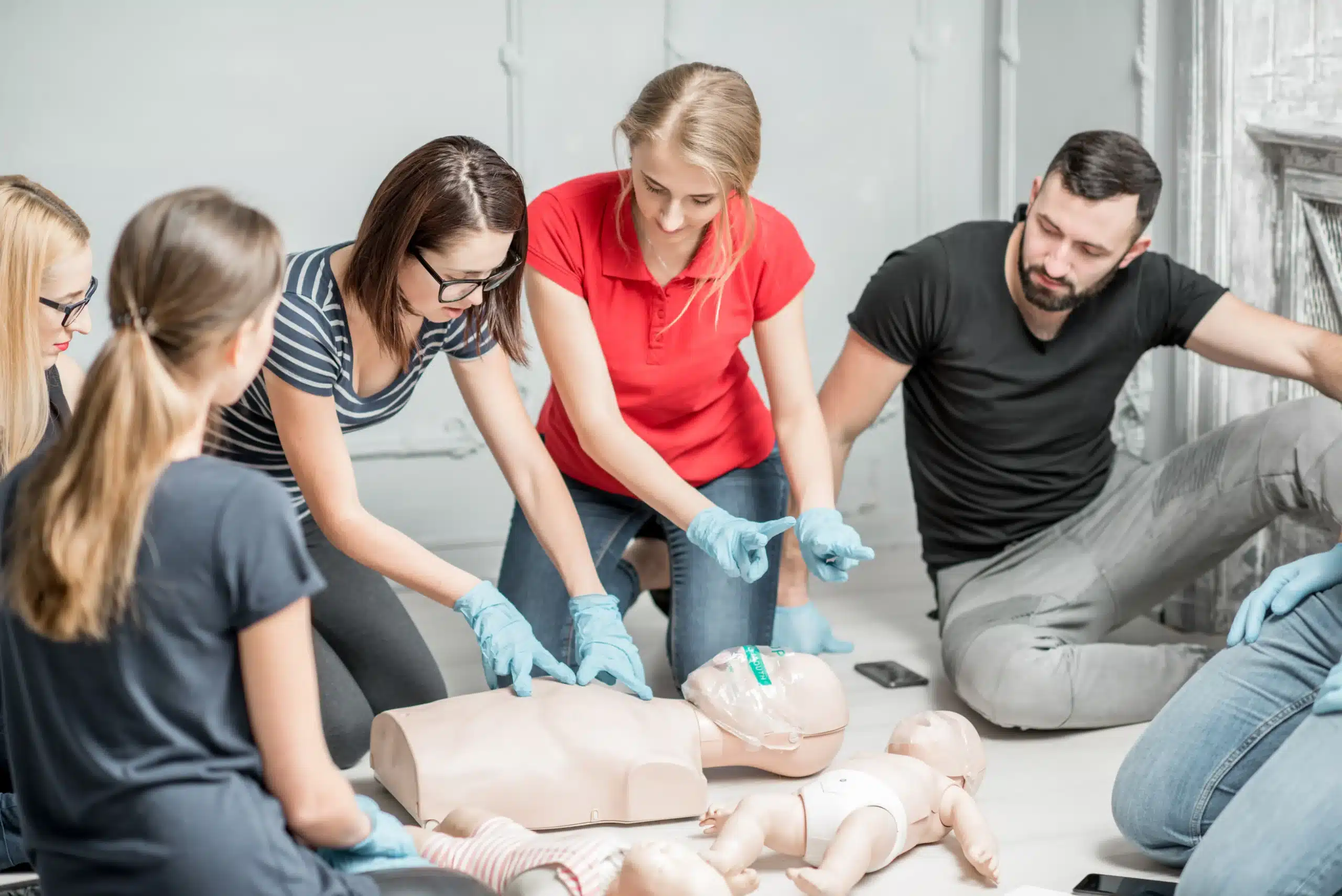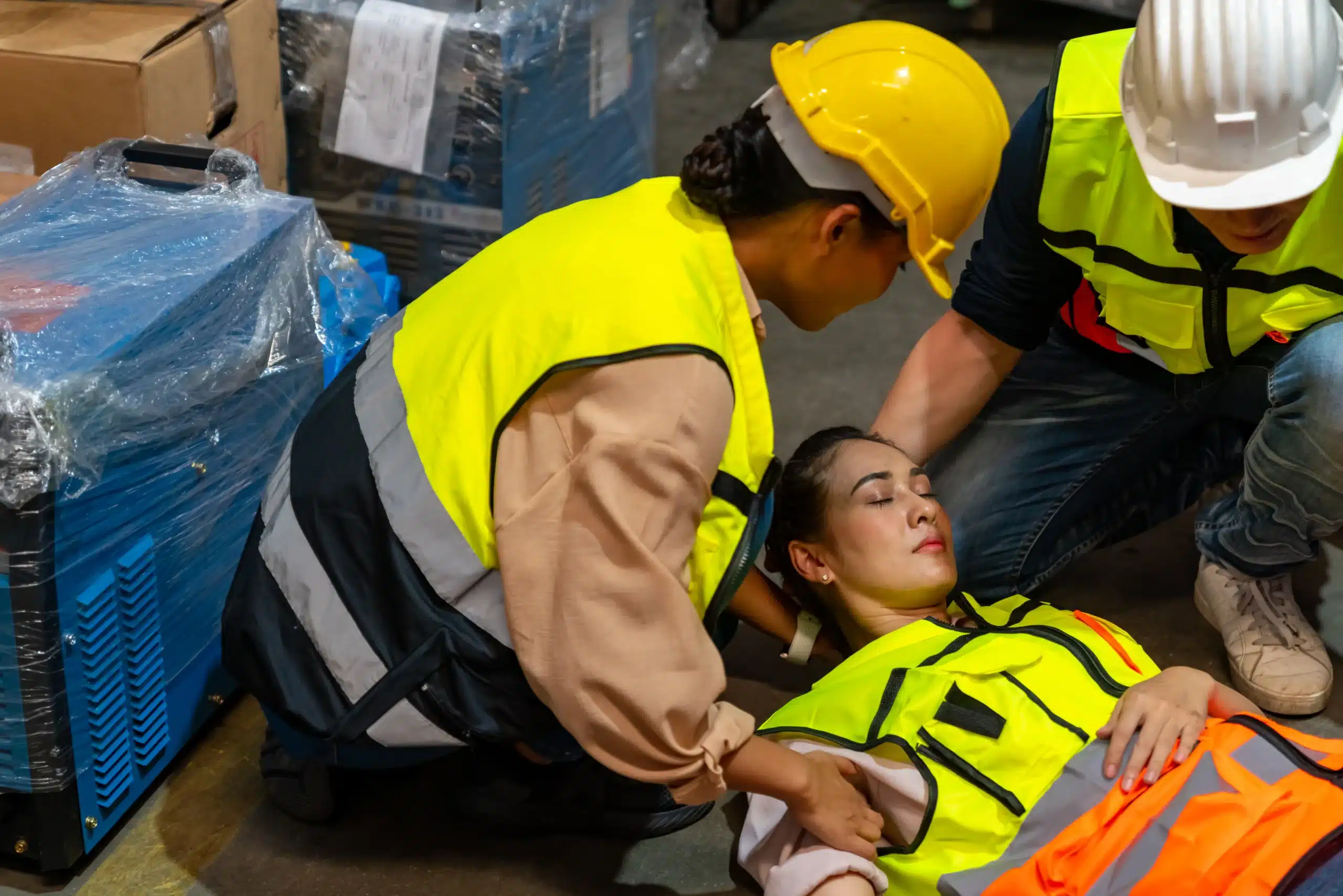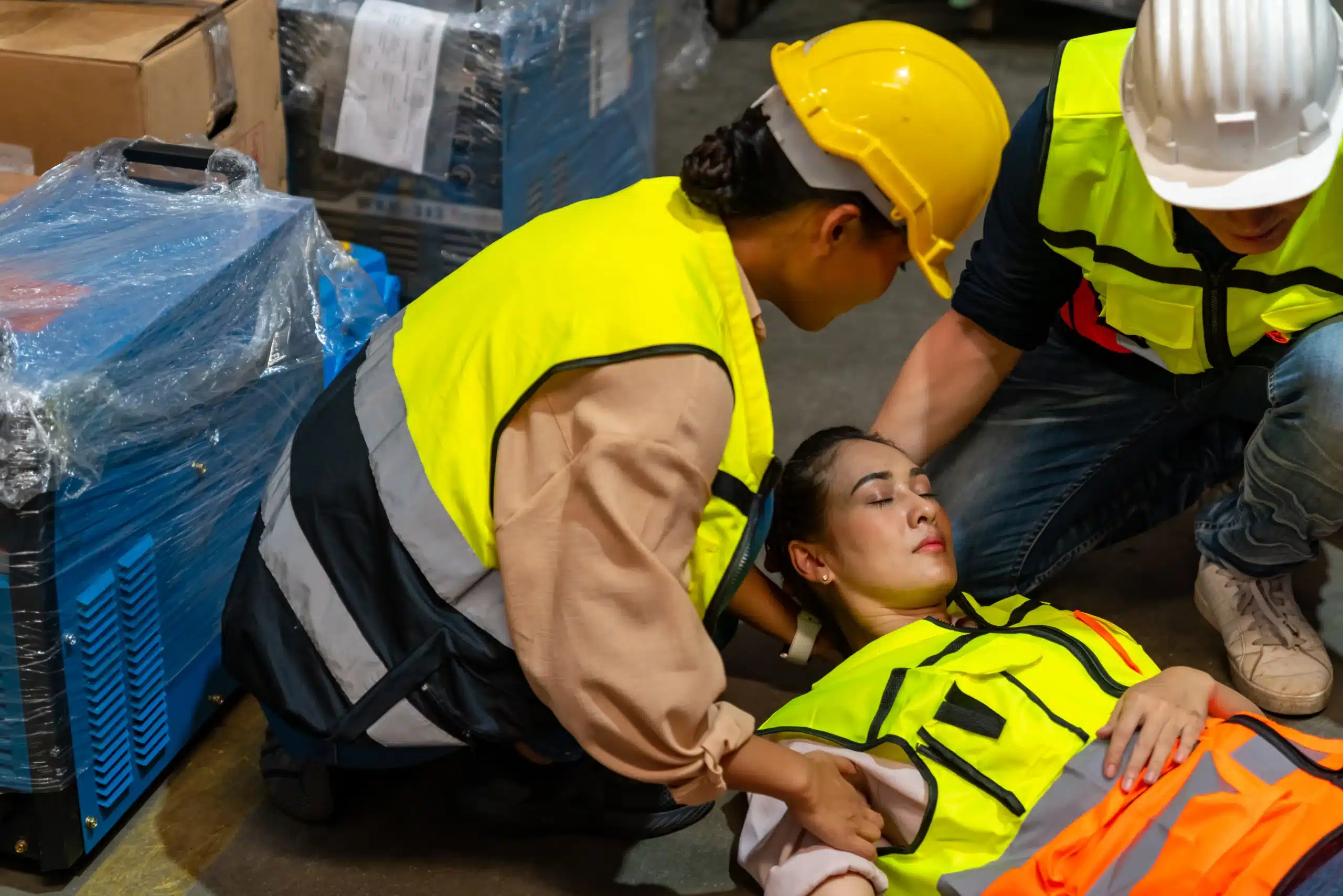As a healthcare provider in Berkeley, your skills and knowledge are your most valuable tools, especially when caring for young patients. Pediatric emergencies demand quick, decisive action, and PALS Heartcode training in Berkeley provides the expertise you need to respond confidently. This blended learning program combines the flexibility of online learning with the practical application of in-person skills sessions, fitting seamlessly into your busy schedule. This article explores the benefits of PALS Heartcode certification, guiding you through the process from start to finish, and debunking common myths along the way. We’ll also highlight local resources and support available in Berkeley, ensuring you have everything you need to succeed.
Key Takeaways
- HeartCode PALS blends online learning with hands-on skills sessions: This flexible approach lets you learn at your own pace and then apply your knowledge in a practical setting.
- Berkeley CPR Classes offers comprehensive AHA courses: Find everything you need for certification, from BLS and ACLS to PALS, all with a low-price guarantee.
- PALS certification empowers you to respond to pediatric emergencies: These essential skills benefit anyone working with children, providing confidence and preparedness in critical situations.
What is HeartCode PALS?
What is HeartCode PALS?
HeartCode PALS is the American Heart Association (AHA)’s blended learning course for Pediatric Advanced Life Support. It combines online coursework with an in-person skills session. This approach allows healthcare providers to learn the knowledge and skills needed to respond to pediatric emergencies, covering topics ranging from respiratory distress and shock to cardiac arrest. The program emphasizes a systematic approach to assessment, intervention, and stabilization of critically ill infants and children. You can learn more about the course through the American Heart Association.
How Does it Differ from Traditional PALS?
The key difference between HeartCode PALS and traditional PALS is the delivery method. Traditional PALS courses are usually instructor-led in a classroom setting. HeartCode PALS uses a blended learning format. This means you complete a significant portion of the coursework online at your own pace, followed by a hands-on skills session with an AHA instructor. The online portion features adaptive learning technology, creating a personalized learning experience. This personalized approach helps you focus on areas where you need more practice and allows you to move more quickly through concepts you’ve already mastered. The hands-on skills session ensures you can apply your knowledge and demonstrate proficiency in essential PALS skills.
HeartCode PALS Benefits in Berkeley
HeartCode PALS offers several advantages for healthcare providers in Berkeley, making it a popular choice for Pediatric Advanced Life Support certification. Let’s explore some key benefits:
Flexibility and Convenience for Healthcare Professionals
Juggling work, family, and continuing education can be tough. HeartCode PALS understands this by offering a blended learning approach. You complete the online portion at your own pace, anytime, anywhere. This flexibility makes it easier to fit the training into your busy schedule, eliminating the need to take time off work or arrange complicated childcare. Once you’ve finished the online modules, you’ll schedule an in-person skills session at a local Berkeley training center, like Berkeley CPR Classes.
Cost-Effectiveness and Time Savings
HeartCode PALS can be more cost-effective than traditional classroom-based PALS courses. The adaptive learning format adjusts to your existing knowledge, potentially saving you time and money. If you’re already familiar with certain concepts, you’ll move through those sections more quickly, focusing on areas where you need more practice. This personalized approach streamlines the learning process, allowing you to concentrate on mastering essential skills. Berkeley CPR Classes offers a low price guarantee for the best deals on PALS certification.
Personalized Training with Adaptive Learning
HeartCode PALS uses adaptive learning technology, creating a truly personalized learning experience. The program assesses your knowledge as you progress and tailors the content accordingly. This means you’ll spend less time reviewing material you’ve already mastered and more time focusing on areas where you need improvement. This targeted approach maximizes your learning efficiency and ensures you gain a strong understanding of the core PALS concepts. The responsive design means you can access the online modules on your computer, tablet, or smartphone.
HeartCode PALS Training: Structure and Components
HeartCode PALS blends online learning with hands-on practice. This flexible format allows you to learn the material at your own pace and then demonstrate your skills in person. Let’s break down the components:
Online Learning: Content and Duration
The online portion of the PALS course features adaptive learning technology. This personalized approach focuses the learning experience on each participant’s individual needs. You’ll work through interactive lessons, case studies, and simulations, covering essential concepts like respiratory emergencies, shock, and cardiopulmonary arrest. This self-directed learning allows you to focus on areas where you need more practice. The American Heart Association provides more details on PALS course options.
Hands-On Skills Session with Simulation Technology
After completing the online modules, you’ll participate in a hands-on skills session. This session typically takes approximately five hours, including breaks. This portion focuses on practicing and testing the skills you learned online, using simulation technology. You’ll work with instructors and other healthcare providers to apply your knowledge in realistic scenarios.
Team Dynamics and Evidence-Based Instruction
The PALS Provider Course aims to improve outcomes for pediatric patients. It prepares healthcare providers to effectively recognize and intervene in emergencies using high-performance team dynamics and high-quality individual skills. The curriculum is based on the latest, evidence-based instruction in life-saving techniques, ensuring you receive the most current and effective training. This focus on teamwork and best practices is crucial for providing optimal care in real-world situations. For more information on skills sessions, visit Code Blue Training.
Get HeartCode PALS Certified: Requirements and Process
This section outlines the steps to become HeartCode PALS certified. It’s a straightforward process designed to equip you with the skills to respond effectively in pediatric emergencies.
Prerequisites and BLS Proficiency
PALS certification builds upon the foundation of basic life support (BLS) skills. Therefore, a current BLS Provider certification from the American Heart Association is a prerequisite for HeartCode PALS. This ensures you have the fundamental knowledge and skills in CPR, airway management, and other essential life-saving techniques. The American Heart Association website offers more information on BLS certification. PALS expands on these core skills, focusing on the specific needs of infants and children.
Complete the Online Course and Assessment
The HeartCode PALS course begins with an online component featuring adaptive learning technology. This personalized approach focuses your learning experience on areas where you need it most, allowing you to learn at your own pace and review material until you feel confident. The online modules cover essential topics such as pediatric assessment, resuscitation algorithms, and team dynamics. This PALS overview highlights the importance of PALS certification for healthcare providers. You’ll complete assessments throughout the online course to gauge your understanding and prepare for the hands-on portion.
Skills Testing and Evaluation
After completing the online portion, you’ll move on to the hands-on skills session. This in-person session focuses on skills practice and testing, allowing you to apply your online learning in a simulated environment. GoACLS describes this blended learning approach, which combines online flexibility with crucial hands-on experience. The AHA PALS Course Options page notes this session typically takes about five hours, including breaks. During this time, you’ll work with instructors and simulation technology to practice key skills and demonstrate your proficiency in pediatric emergency care, including resuscitation team dynamics and evidence-based treatment algorithms.
Overcome Challenges in HeartCode PALS Certification
Let’s be honest, adding another certification to your to-do list can feel overwhelming. But with a little planning, HeartCode PALS certification can fit seamlessly into your busy schedule. This section addresses common challenges and offers practical solutions to help you succeed.
Time Management for Busy Professionals
Juggling work, family, and other commitments makes finding time for professional development tough. One of the biggest advantages of HeartCode PALS is its flexibility. The online portion allows you to learn at your own pace, fitting study sessions around your existing schedule. Break down the material into smaller chunks, setting realistic goals for each study period. Even dedicating 30 minutes a day can make a significant difference. Treat these study sessions like important appointments, scheduling them into your calendar and sticking to your plan. Consider using a time management app to help you stay organized.
Tech Support for Online Learning
While online learning offers convenience, technical issues can be frustrating. Familiarize yourself with the HeartCode PALS platform and its resources before you begin. The American Heart Association provides technical support, so don’t hesitate to reach out if you encounter problems. Ensure your computer and internet connection meet the program requirements for a smooth learning experience. A quiet, dedicated workspace can minimize distractions and enhance your focus.
Effective Study Techniques
Successfully completing HeartCode PALS requires more than just passively reviewing the material. Active learning strategies are key. Take notes, highlight key concepts, and use the practice questions and case studies provided. The personalized adaptive algorithm in the HeartCode PALS program tailors the learning path to your individual needs, focusing on areas where you need more practice. Don’t be afraid to revisit challenging topics. Consider forming a study group with colleagues for support and to share different perspectives. Preparing thoroughly for the hands-on skills session will boost your confidence and ensure you’re ready for the final evaluation. Check out resources like Online PALS Classes in Berkeley: Your Guide for additional study tips.
Hands-On Skills Training: Connect Theory and Practice
HeartCode PALS isn’t just about clicking through online modules; it’s about confidently applying your knowledge in real-world scenarios. This blended learning approach bridges the gap between theory and practice, ensuring you’re prepared for pediatric emergencies.
Apply Online Learning
The online portion of HeartCode PALS provides a strong foundation in pediatric advanced life support principles. You’ll work through interactive lessons, case studies, and team response scenarios, solidifying your understanding of key concepts before you move on to the hands-on portion. This online component sets the stage for practical application and ensures you’re ready to translate knowledge into action. The PALS Course Options from the American Heart Association offer more information on this blended learning approach.
Master Pediatric Emergency Response Skills
HeartCode PALS combines online learning with crucial hands-on practice. You’ll learn at your own pace through online modules and then demonstrate your skills in person with a certified instructor. This format allows you to absorb the material thoroughly and then translate that knowledge into real-world skills, ensuring you can effectively respond to various pediatric emergencies. Learn more about how HeartCode PALS prepares you for pediatric emergencies through this certification guide.
Simulation Scenarios and Team Training
The hands-on skills session is where you’ll put your knowledge to the test. You’ll participate in simulated pediatric emergency scenarios, working both individually and as part of a team. These simulations provide a safe environment to practice critical skills like CPR, using advanced airway techniques, and administering medications. The focus on team dynamics reinforces the importance of communication and coordination in high-pressure situations, mirroring real-world medical emergencies. This practical experience, combined with online modules, prepares you to confidently manage pediatric emergencies as part of a coordinated team.
Find Accredited HeartCode PALS Courses in Berkeley
Finding the right HeartCode PALS course is important for healthcare providers looking to refine their pediatric emergency care skills. This blended learning program combines online coursework with a hands-on skills session, offering flexibility and a personalized learning experience. Let’s explore how you can find accredited HeartCode PALS courses in Berkeley.
Local Training Centers and Providers
Safety Training Seminars, a woman-owned AHA Training Center, offers high-quality American Heart Association BLS, ACLS, PALS, CPR, and First-Aid courses right here in Berkeley, CA. They provide a convenient local option for those seeking comprehensive training. Be sure to check their website for course schedules and availability. For those in surrounding areas, our sister sites offer similar courses, including HeartCode PALS in Sacramento and Modesto.
AHA Resources and Course Locator
The American Heart Association (AHA) offers HeartCode® courses as part of its blended learning approach to resuscitation training. This approach combines online learning, where you complete part of the course independently, with a hands-on skills session. The AHA website provides resources and a course locator to help you find certified training centers near you. The online portion often features adaptive learning technology, creating a personalized and focused learning experience. You can find more information on blended learning from resources like the Red Cross, which also utilizes this technology in their programs.
Prepare for HeartCode PALS Success
Acing your HeartCode PALS certification involves preparation, practice, and ongoing commitment. Here’s a breakdown of each stage:
Study Tips and Resources
HeartCode PALS blends online learning with hands-on practice. This flexible format lets you learn at your own pace and then demonstrate your skills in person. The online portion features adaptive learning technology, creating a personalized, focused learning experience. You can even adjust your self-assessment of competence as you move through the HeartCode PALS course, tailoring the content to your needs. Take advantage of this feature to hone in on areas needing extra support.
Practice Scenarios and Skill Refinement
The PALS course isn’t just about absorbing information; it’s about applying it. The hands-on skills session, typically lasting about five hours, allows you to put knowledge into action. These AHA HeartCode® Skills Sessions are a critical component of this blended learning. You’ll work with an authorized AHA PALS Instructor and engage in realistic simulation scenarios. The full course includes both the online HeartCode® PALS training and the hands-on portion, so prepare for both. Consider supplementing your learning with the optional PALS Plus Advanced eLearning Modules.pdf) for a deeper dive into specific topics.
Maintain and Renew Your Certification
Your PALS certification is valid for two years. Staying current ensures you’re prepared to handle pediatric emergencies. It’s a common misconception that PALS certification is only for medical professionals—anyone working with children, from childcare providers to camp counselors, can benefit. Regularly reviewing the material and considering refresher courses will help maintain your skills and confidence. PALS certification is an investment in your ability to respond effectively in critical situations.
Debunking HeartCode PALS Myths
Addressing Myths About Online PALS
One of the biggest misconceptions about PALS certification is that it’s only for doctors and nurses working in hospitals. That’s simply not true. PALS certification equips anyone with the skills to respond to pediatric emergencies, whether you’re a healthcare provider, a childcare professional, or a concerned parent. These skills can be life-saving in various settings, from schools and summer camps to even your own home. Another common myth is that online PALS courses aren’t as good as in-person training. The HeartCode PALS blended learning format combines online learning with a required hands-on skills session, ensuring you get comprehensive training and practical experience. This flexible approach allows you to learn the material at your own pace online and then demonstrate your skills in person with a certified instructor. More information on PALS is available online.
PALS Importance for Experienced Providers
Even seasoned healthcare professionals can benefit from PALS certification. Medical knowledge and best practices are constantly evolving, and PALS training ensures you stay up-to-date with the latest guidelines. It reinforces essential skills and provides a refresher on critical procedures, ultimately improving patient outcomes. It’s not just about having the experience; it’s about having the most current, evidence-based knowledge and skills to provide the best possible care during a pediatric emergency. PALS certification demonstrates your commitment to providing high-quality care and strengthens your credentials, regardless of your experience level. Consider exploring PALS courses to enhance your skills and knowledge.
HeartCode PALS Resources and Support in Berkeley
Local Support for Healthcare Professionals
Finding reliable and convenient training is crucial for healthcare professionals seeking PALS certification in Berkeley. Thankfully, several local options are available. Berkeley CPR Classes offers various American Heart Association courses, including HeartCode PALS, making it a convenient hub for your certification needs. They understand the demands on healthcare providers and offer flexible scheduling and a low-price guarantee. Serving Alameda, Oakland, and Berkeley, their central location makes accessing quality training easy. For those who prefer in-person learning, they also offer discount group classes, fostering a supportive learning environment.
Ongoing Education and Skill Maintenance
Maintaining your PALS certification is just as important as earning it. The knowledge and skills learned in PALS are essential for providing optimal pediatric care. Berkeley CPR Classes offers resources and support for ongoing education, including RQI classes to help you stay current with the latest guidelines. They also offer refresher courses to help you maintain your skills and confidence. Staying current with your PALS certification demonstrates your commitment to providing high-quality care and ensures you’re prepared for pediatric emergencies. Consider exploring their BLS and ACLS courses to further enhance your skillset.
Related Articles
- AHA PALS Classes in Berkeley, CA – Berkeley CPR Classes
- ACLS HeartCode Oakland: Your Certification Guide – Berkeley CPR Classes
- HeartCode ACLS Alameda: Your Certification Guide – Berkeley CPR Classes
- ACLS HeartCode Berkeley: Your Complete Guide – Berkeley CPR Classes
- CPR Myths You Need to Stop Believing – Berkeley CPR Classes
Frequently Asked Questions
What exactly is involved in the HeartCode PALS blended learning format? HeartCode PALS combines online learning with a required in-person skills session. You’ll work through interactive lessons, case studies, and simulations online at your own speed. Then, you’ll practice and test your skills in a hands-on session with a certified instructor.
I’m already BLS certified. Why do I need PALS? While BLS provides a foundation in basic life support, PALS builds upon those skills with a specific focus on pediatric patients. It covers advanced life support techniques tailored to the unique needs of infants and children.
How long does it take to complete the HeartCode PALS course? The online portion is self-paced, so the completion time varies. However, the in-person skills session typically takes around five hours, including breaks.
Where can I find HeartCode PALS courses in Berkeley? Berkeley CPR Classes offers HeartCode PALS courses, along with other AHA certifications. You can also use the AHA’s online course locator to find other training centers near you.
How can I fit PALS training into my already busy schedule? The flexibility of the HeartCode PALS blended learning format is designed for busy professionals. You can complete the online modules anytime, anywhere, fitting them around your existing commitments. The in-person skills session can be scheduled separately for further convenience.








